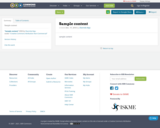
Sample content
- Subject:
- English Language Arts
- Material Type:
- Reading
- Date Added:
- 02/21/2018


Sample content
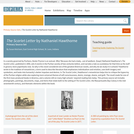
This collection uses primary sources to explore The Scarlet Letter by Nathaniel Hawthorne. Digital Public Library of America Primary Source Sets are designed to help students develop their critical thinking skills and draw diverse material from libraries, archives, and museums across the United States. Each set includes an overview, ten to fifteen primary sources, links to related resources, and a teaching guide. These sets were created and reviewed by the teachers on the DPLA's Education Advisory Committee.
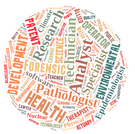
The students will explore, research, and become more knowledgeable in various careers in science. Students will apply this knowledge by creating a lab, hands-on activity, visual, or video. Opportunity for student choice is provided and creativity to apply their understanding is given.
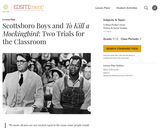
This lesson is designed to apply Common Core State Standards and facilitate a comparison of informational texts and primary source material from the Scottsboro Boys trials of the 1931 and 1933, and the fictional trial in Harper Lee's novel, To Kill A Mockingbird (1960).
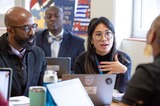
The Washington Office of Superintendent of Public Instruction is releasing this model tool for screening for biased content to Washington districts in the hope that it will provide suggestions and examples for review teams during the instructional materials selection and adoption process.
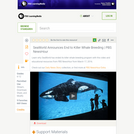
Informational text reading, student handout, and video.
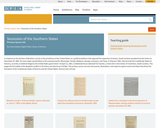
This collection uses primary sources to explore the secession of southern states from the US Government prior to the Civil War. Digital Public Library of America Primary Source Sets are designed to help students develop their critical thinking skills and draw diverse material from libraries, archives, and museums across the United States. Each set includes an overview, ten to fifteen primary sources, links to related resources, and a teaching guide. These sets were created and reviewed by the teachers on the DPLA's Education Advisory Committee.
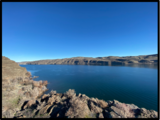
The Second Grade Elementary Framework for Science and Integrated Subjects, How Can Dams Change the Land Around Them, uses a local phenomena of impact of the Wanapum Dam on the Columbia River and a crack in that dam to understand erosion and changes in the landscape. It is part of Elementary Framework for Science and Integrated Subjects project, a statewide Clime Time collaboration among ESD 123, ESD 105, North Central ESD, and the Office of Superintendent of Public Instruction. Development of the resources is in response to a need for research- based science lessons for elementary teachers that are integrated with English language arts, mathematics and other subjects such as social studies. The template for Elementary Science and Integrated Subjects can serve as an organized, coherent and research-based roadmap for teachers in the development of their own NGSS aligned science lessons. Lessons can also be useful for classrooms that have no adopted curriculum as well as to serve as enhancements for current science curriculum. The EFSIS project brings together grade level teams of teachers to develop lessons or suites of lessons that are 1) pnenomena based, focused on grade level Performance Expectations, and 2) leverage ELA and Mathematics Washington State Learning Standards.

Tremendous Trees or Tree-mendous Trees encourages students to use inquisitive and creative behaviors, to think like a scientist. The module extends the Essential Strategies of Attributes and Questioning introduced in Kindergarten and First Grade. Students use questions to approach problems and identify attributes to sort, classify, and make inferences to create analogies on observational data about our world using this module for all students. The classroom teacher should work with a specialist or special educator to find or develop alternate activities or resources for visually impaired students, where appropriate.
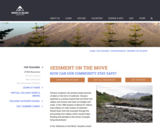
Volcanic eruptions can produce large amounts of debris in the form of sediment. Volcanic sediment is a serious hazard that can flood river valleys, bury homes and wash out bridges and roads. In the 1980 eruption of Mount St. Helens, many billions of cubic meters of sediment flowed down from the mountain through the surrounding river valleys, which caused major flooding and damage to the homes of people living downstream.
In the “Sediment on the Move†storyline, fourth-grade students explore the hazards of volcanic sediment and solve the problem of managing these hazards. This robustly developed and problem-based learning unit supports teachers in creating a rigorous and rich experience for students through use of fully-developed teacher support resources (Google Slides for students ready to be used), rich media (videos, images, first-person narratives), and a plethora of engaging and 3-dimensional formative assessments.
Through various activities, scientific inquiry and exploration, students become acquainted with the size and scale of volcanic sediment as a long-term hazard for communities that live downstream of volcanoes. In this unit students design their own community and roleplay as city council members. Students collaborate with characters who model real-world career professionals (such as engineers, geologists and emergency managers) who help them design their own solutions to the problem of volcanic sediment. Through science, teamwork, and communication, students generate and compare multiple solutions to help their community be prepared for the hazards and challenges from volcanic sediment. At the end of the storyline, students create recommendations and design plans to share with other communities facing similar challenges.
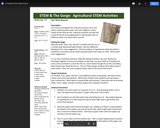
In this lesson, students will investigate seeds and the process of seeds growing to become the food we eat. Includes activity instructions, extension activities, songs, and a vocabulary list.
NGSS: Partially meets 2-LS2-1, Extension activities meet 4-LS1-1, 5-LS-1
Common Core: W.2.7, W.2.8, Extension activities meet MD.K, MD.1, MD.2.1, MD.3.3, MD, 4.4, MD.5
Social Sciences: 3.12, 4.12
Time: 45 minutes
Materials: "Seed, Soil, Sun" or other book about seed germination and plant growth, clear plastic cups, paper cups, paper towels, seeds, water
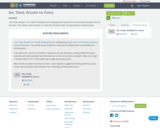
"See, Think, Wonder" is a "Visible Thinking Routine" developed by Project Zero at the Harvard Graduate School of Education. This activity invites students to "make their thinking visible" by responding to a selected poem.
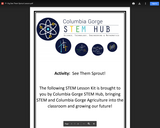
In this lesson, students will investigate the miraculous process of air and water combining with seeds, soil, and sunlight to create nearly all the food we eat. Extension activities can take this a step further by encouraging kids to track growth rates of different seeds in an observation journal. Includes place-based connection, activity instructions, extension activities, songs, and vobaulary list.
NGSS: Partially meets 2-LS2-1, 1-LS1-1
Common Core: W.2.7, W.2.8, and MD.K, MD.1, MD.2.1, MD.3.3, MD.4.4, MD.5 with extension activities.
Time: 45 minutes
Materials: "One Bean" book or other book about plant germination, clear plastic cups, paper cups, paper towels, seeds, and water.

Recognize that the policies of segregation applied to every aspect of American life, including early aviation. Investigate the contributions of African American pilots to early aviation.
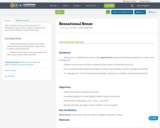
This is a 50 minute lesson where preschool to kindergarten-aged students explore using their five senses several different station of materials

This lesson reviews sentence structure and is intended for middle school students.
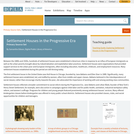
This collection uses primary sources to explore settlement houses during the Progressive Era. Digital Public Library of America Primary Source Sets are designed to help students develop their critical thinking skills and draw diverse material from libraries, archives, and museums across the United States. Each set includes an overview, ten to fifteen primary sources, links to related resources, and a teaching guide. These sets were created and reviewed by the teachers on the DPLA's Education Advisory Committee.

This introduces William Shakespeare's language by providing students with an opportunity to examine phrases and sayings first written in his plays. Students will read an informational text as well as spend time researching various Shakespearean phrases and their presence in his plays to determine his continuing relevance in modern language today. Students will be able to apply Shakespearean phrases to modern situations in order to determine his relevance.
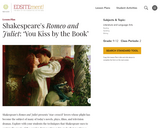
As one of literature's most iconic figures, both Shakespeare's plays and poetry provide an interesting glimpse into a variety of essential themes. In this lesson, students will examine how Shakespeare used the sonnet tradition to enhance his stagecraft by performing a scene from his play Romeo and Juliet.

Practicing geometry and writing skills, students will use two-dimensional shapes to build a house on a page, then write a sentence using sight words and encodable words such as "I have a little house." They can be required to identify each shape as they remove it from their "house." This is beneficial in making connections across curriculum between language arts and math skills. It give hands-on practice with identifying shapes by their characteristics, as well as use of sight words and encoding words (or copying from what teacher provides if desired.)